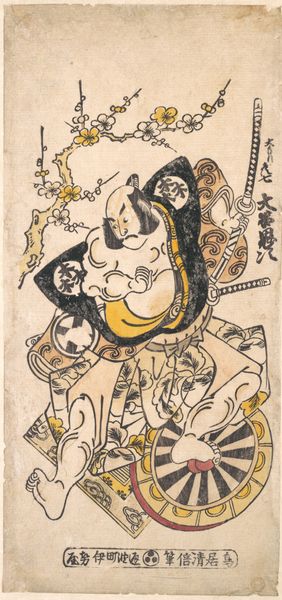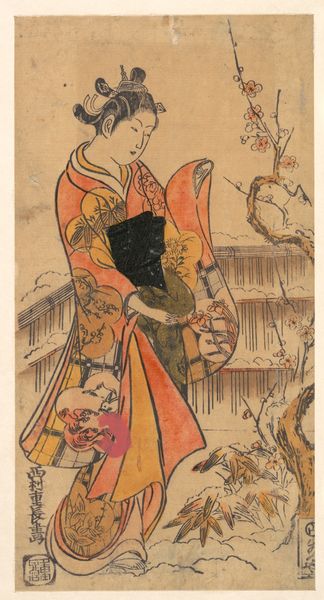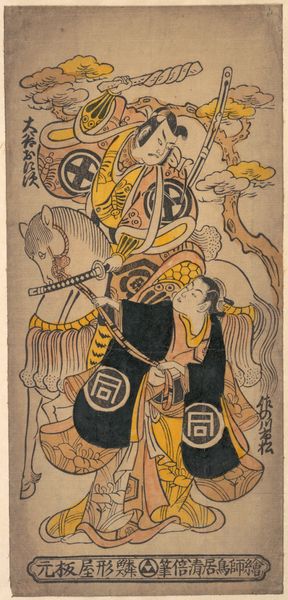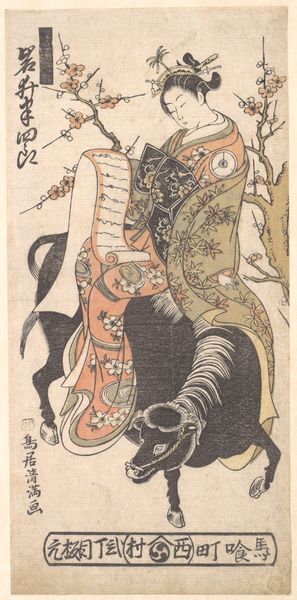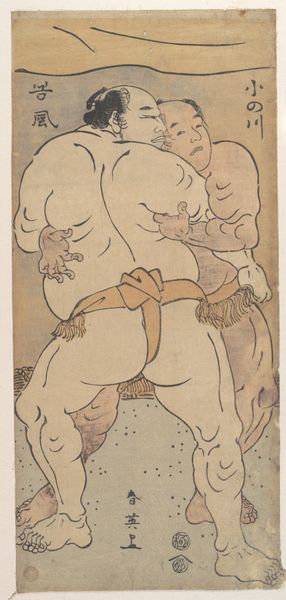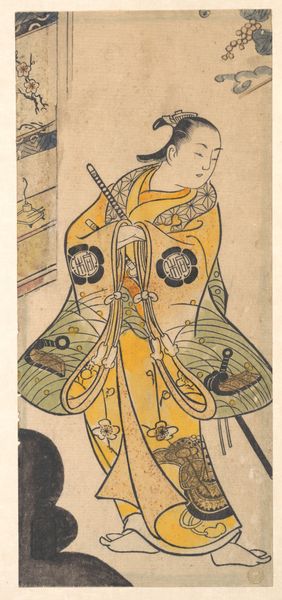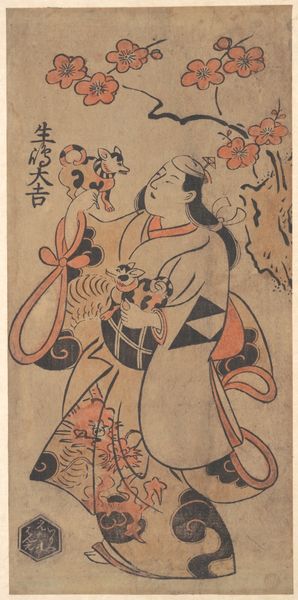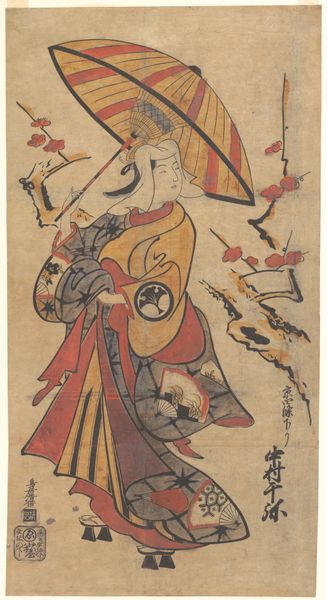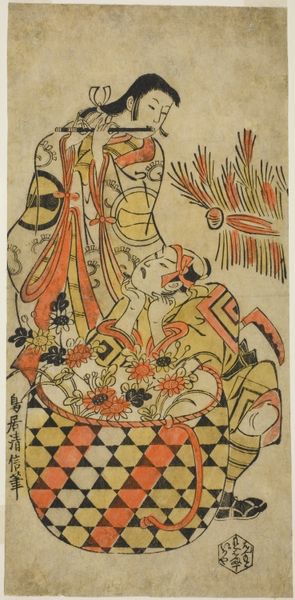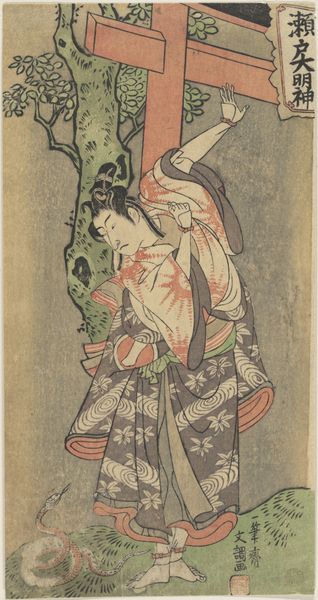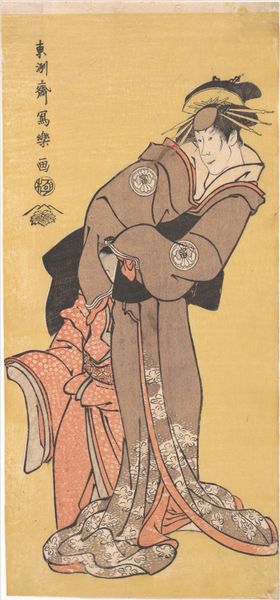
Matsumoto Koshiro III as Kusunoki Bokon and Sawamura Kijuro as Omori Hikoshichi in the Scene from a Drama (Sandaime Matsumoto Koshiro no Kusunoki Bokon to Sawamura Kijuro no Omori Hikoshichi) 1767 - 1768
0:00
0:00
print, woodblock-print
# print
#
asian-art
#
ukiyo-e
#
japan
#
figuration
#
woodblock-print
#
history-painting
Dimensions: 30.9 × 13.8 cm
Copyright: Public Domain
Editor: Here we have Torii Kiyonaga's woodblock print from 1767-68, depicting actors Matsumoto Koshiro III and Sawamura Kijuro. The poses and costumes are so dramatic, almost like a freeze-frame of a really intense moment. I’m struck by how much of the visual information is conveyed with simple outlines and flat colors. What is your impression of this work? Curator: Immediately, the formal tension is apparent. Kiyonaga uses strong, decisive lines to define the figures, creating a dynamic composition despite the static medium of the woodblock. Notice how the lines dictate the forms, almost irrespective of shading or realistic modelling. It’s a visual shorthand, yet profoundly effective. Editor: Effective, but almost simplified, in a way. Is the limitation of the technique itself contributing to the bold design? Curator: Precisely. The inherent flatness of the woodblock necessitates a focus on line and shape to create depth and form. Consider the patterned robes. They aren’t merely decorative; they create a complex visual field that plays against the solid blocks of color defining the actors' bodies. The use of color itself—how does it strike you? Editor: It’s not realistic, but very striking! The unexpected color combination enhances the otherworldly feeling. What did you mean when you spoke about visual "field" there? Curator: The "visual field" can refer to what the eye sees, a framed fragment, but I was suggesting there is also a structural quality, a set of tensions across the composition between the figures' placement, their costume's surface treatments, the textual additions, the seals. Editor: I hadn't thought about the visual field. I see how the structural composition and interplay of the forms is the entire narrative. Curator: Indeed. Ultimately, this print transcends mere representation; it operates as a sophisticated system of visual signs. Editor: This way of decoding its components shows the extent of its refinement. Curator: Every aspect of the design contributes to a cohesive whole, embodying its own form of logic and demonstrating how visual constraints can engender powerful artistic expression.
Comments
No comments
Be the first to comment and join the conversation on the ultimate creative platform.
